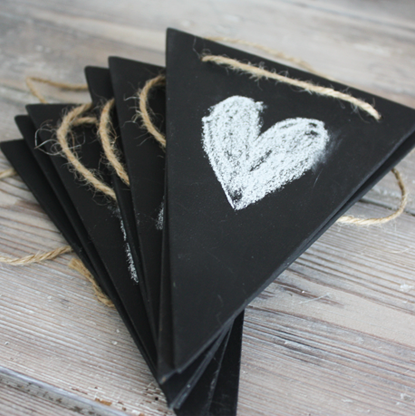My first real experience with bunting was with the Christmas card bunting of my primary school years.
Then I was in England with the Jubilee celebrations in 2012 and bought my daughter - whose name derives from Queen Mary and Queen Elizabeth - a string of Jubilee bunting at the Bolton market.
 |
| This 1953 image shows bunting for the Queen's Coronation celebration in Newcastle, England. |
Then I bought my grandson Jonathan a string of Cars-bunting . . .
And my Ozzie granddaughters Nina and Gweni took part in bunting fun . . .
And I found myself a string of crochet doily bunting . . .
And the guest bedroom went hessian bunting . . .
And then Ina Steyn, my sister-in-love, gave me blackboard bunting . . .
Bunting was originally a specific type of lightweight worsted wool fabric manufactured seemingly from about 1594, certainly from 1605, and used for making ribbons and flags.
The origin of the word is uncertain. Today, "bunting" is a term for any festive decorations made of fabric, or of plastic, paper or even cardboard in imitation of fabric. Typical forms of bunting are strings of colourful triangular flags and lengths of fabric. The term bunting is also used to refer to a collection of flags.










